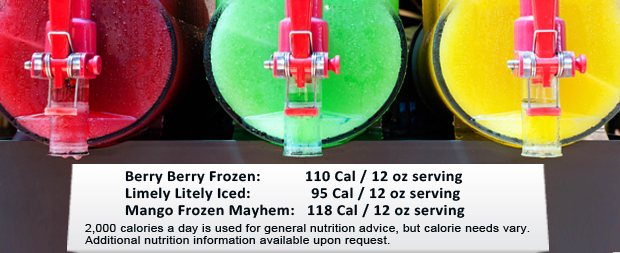Restaurant Industry Gets Another Chance to Chime in on Menu Labeling
CalBar Certified Franchise & Distribution Law Specialist
by Barry Kurtz
818-907-3006
Franchisors in the food service industry have until January 18, 2018 to comment on the latest version of the Food & Drug Administration’s Menu Labeling Guidance. The FDA released the draft November 7th. This version includes pictorial suggestions for how consumer information might be displayed under certain circumstances.
The currently non-binding recommendations aim to clarify options for menu labeling compliance and will eventually affect any food and beverage retailer, including those selling self-service foods and buffet operators.
Special Orders: The ABCs of Menu Labeling
 Caloric information is the key ingredient in menu labeling requirements. But the FDA is now taking a more cooperative approach to handling special situations:
Caloric information is the key ingredient in menu labeling requirements. But the FDA is now taking a more cooperative approach to handling special situations:
All You Can Eat: In the current draft, signage regarding serving size and calories are not required next to every food item offered on a buffet. However, the info must be available to consumers in other forms, i.e. gel window-clings on sneeze guards or on menu boards.
Speaking of menu boards, restaurant owners need not provide one at their businesses if they do not already display a menu.
On the other hand, if a menu board is available on site, it must be updated to include nutrition information. Digital kiosks or other devices, hand-held menus, etc., may also be used to convey consumer info about nutrition.
By the Bucket or Bowl: Family style restaurants like Maggiano’s will be required to provide caloric info for the whole (multiple serving) menu item sold. However, family-style restaurants may relay additional information, such as the suggested number of individual servings and calories per serving of that item. The FDA offers this example:
Family-Style Salad: 1,200 Cal: 150 Cal/serving, 8 servings
Beer, Wine, Cocktails: If the choices are listed on a menu or menu board, nutrition should also be displayed. “Display” foods are not subject to the labeling requirements. These include beers served on tap.
Seasonal beers (pumpkin spiced ale, anyone?) on the menu are also exempt from labeling requirements provided they are not available for more than 60 days per year.
Customer Crafted Menu Items: The FDA now offers “build-your-own” restaurants like Chipotle or PizzaRev a bit of flexibility. The Administration suggests this type of restaurant group customer options, i.e. pizza crusts, sauce choices and toppings so that consumers can quickly calculate which options provide the most and least amount of calories per slice or serving.
Chef’s Choice: Food selections based on seasonal produce or other items that change on a daily basis are not subject to the nutrition labeling guidance, UNLESS, these selections appear regularly. So a restaurant that serves clam chowder every third Friday will have to provide nutrition information.
Self Service Foods: Food and beverages in soda machines; grab and go donut cases, sandwich or salad coolers; rotisserie chicken warming carts and similar displays and dispensers all fall under the self-service or food-on-display categories.
Pre-packaged foods like sandwiches prepared on site but already wrapped for customer convenience should display an FOP, or “front of pack” label with calorie information.
Donut cases and beverage dispensers found in grocery or convenience stores contain unpackaged foods. A label can be affixed to the dispenser or display case detailing information for each choice available, or displayed on signage nearby.
To Lab Test, or Not To Lab Test?

The FDA will not require restaurants to submit menu items to food labs to determine nutrition information. But legitimate options for determining calorie and other data are required. The Administration recommends using one of the following:
- Laboratory Analysis
- USDA National Nutrient Database
- Trade Association or Industry Databases
- Alcohol and Tobacco Tax and Trade Bureau Methods for Analysis
- Cookbook Listings
- Other reasonable means
If opting for other reasonable means, records must be maintained at corporate headquarters or the restaurant’s main office in case the FDA requests the data and method used to substantiate the information.
Chain Stores and Co-Ops
Independent franchises, cooperatives, grocery chains and similar businesses not selling substantially similar foods from location to location are not considered “covered establishments” as far as the FDA Menu Labeling Guidance is concerned. “Covered Establishments” include businesses that:
- Have 20 or more locations
- Do business under the same name
- Sell substantially same menu items
- Sell food eaten on premises or food that may be taken away
So a gasoline franchisee of a major chain that also operates an independently owned mini-mart under a different name would not be considered a “covered establishment”.
The Wrap Up
Again, the Administration decided to take a more flexible approach in their rules regarding nutrition labeling, and work more cooperatively with covered establishments:
. . . our typical approach following an inspection would be to raise any compliance concerns with the most responsible person (e.g., the manager or owner) at a covered establishment during a close-out inspection meeting or in regulatory meetings with that establishment. If post-inspection issues remain, we may send a letter to the establishment asking for the firm to come into compliance. Any enforcement activities we pursue will be consistent with our public health priorities. . .
All in all, this seems like a much more feasible plan than the 2014 Final Rule previously published.
Barry Kurtz is the Chair of Lewitt Hackman’s Franchise & Distribution Practice Group.
